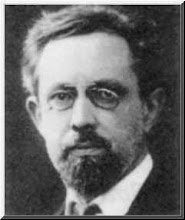Correct your Maps, Newcastle is Peru.
John Cleveland, 1613-1658
James Attlee's Isolarion is a love song to Oxford's Cowley Road. It's also about making a pilgrimage, a journey of self-discovery. The exigencies of everyday life prevent him from pursuing his idea to the far ends of the earth so he settles for his own doorstep, and his own inner space. The latter isn't exactly Conradian in its depth - Oh! the horror! - but the book is still a pleasant enough read and I did learn a few things about the area. Did you know that Bartlemas Chapel was part of an old leper hospital, that the now rather unprepossessing Plain was the site of St Edmund's Well renowned in the Thirteenth Century for its healing waters, or that Iffley had an anchorite living in the church-yard? I didn't, but then when I lived just off the Cowley Road at the end of the 1980s my attention was probably distracted by other things: the three burglaries, the senseless vandalism of my car (I could understand you wanted to steal it but why did you have to break the steering wheel off?), the harmless junkie that lived opposite in a tiny gap between a garage and the wall of St Stephen's House. Oh and the party house in our street that insisted on musical entertainments for the whole neighborhood until 3.00 am every weekend, and the friendly neighbour with the savage dog that carried out his motor-cycle repair business on the pavement.
Actually, it wasn't that bad a place to live if you didn't have much money and had the physical and mental resources for tolerance. At least there was diverse life there - something that Attlee quite rightly celebrates. He also has some interesting things to say about the 'consultation' process that informed the planners who created the Cowley Road as it is today. Clearly Attlee is ambivalent about the outcome. I actually quite like it, but then again I don't live there, so what I think is surely rather irrelevant. The more interesting questions he illuminates are about who exactly is consulted, who controls the self-selected tribunes of the people, how far planning decisions are made on the basis of expert evidence and who, ultimately, sets the agenda.
Local politics can be a rough, tough and rather thankless sort of game, but it is the sort of politics that has very direct consequences for everyday lives. Where the road crossings are and how fast the cars are moving is something that is going to make a difference: not necessarily to you, but perhaps to your neighbour's children. It would appear from his account that these sorts of things tend to attract community consensus whereas street art - what it looks like and where it is sited - are deeply divisive. Oh well, each to his own. Attlee seems to be professionally involved in the art world so as of the proverbial shoemaker the worst I can say of him is that he might focus a little too much on leather.









No comments:
Post a Comment